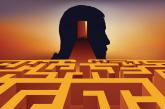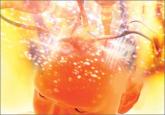Article

Early interventions for psychosis
- Author:
- Morris B. Goldman, MD
- Marko Mihailovic, MA, LCPC
- Philip G. Janicak, MD
Despite considerable challenges, prevention and first-episode recovery programs may improve outcomes.
Article

Nontraditional therapies for treatment-resistant depression: Part 2
- Author:
- Mehmet E. Dokucu, MD, PhD
- Philip G. Janicak, MD
SECOND OF 2 PARTS
Options include OTC agents, anti-inflammatory/immune system therapies, and devices.
Article

Nontraditional therapies for treatment-resistant depression
- Author:
- Mehmet E. Dokucu, MD, PhD
- Philip G. Janicak, MD
FIRST OF 2 PARTS
Some off-label agents show promise, but carry risks.
Article

What’s new in transcranial magnetic stimulation
- Author:
- Philip G. Janicak, MD
Recent developments have enhanced the benefits of this treatment.
Article

Advances in transcranial magnetic stimulation for managing major depressive disorders
- Author:
- Philip G. Janicak, MD
- Vincet Sackett, MD
- Karyn Kudrna, BSN, RN
- Bradley Cutler, MD
The utility of TMS for treating depression continues to widen, as the technology is refined
Article
The re-emerging role of therapeutic neuromodulation
- Author:
- Philip G. Janicak, MD
- Sheila M. Dowd, PhD
- Jeffrey T. Rado, MD
- Mary Jane Welch, DNP, APRN, BC, CIP
Recent developments have revived interest in brain stimulation for difficult-to-treat patients
News
Paliperidone ER: Reformulated antipsychotic for schizophrenia Tx
- Author:
- Jeffrey Rado, MD
- Sheila M. Dowd, PhD
- Philip G. Janicak, MD
Risperidone’s metabolite behaves well but differently in once-daily delivery.
News
Vagus nerve stimulation
- Author:
- Jeffrey Rado, MD, MPH
- Philip G. Janicak, MD
Surgical option for treatment-resistant depression
News
Therapy-resistant major depression The attraction of magnetism: How effective—and safe—is rTMS?
- Author:
- Sheila M. Dowd, PhD
- Philip G. Janicak, MD
Despite early mixed results, magnetic stimulation of the prefrontal cortex is showing potential in major depression and other psychiatric...
Article
Antipsychotics and mood disorders: A complicated alliance
- Author:
- Philip G. Janicak, MD
Neuroleptics have played an important but controversial role in mood disorder treatment. Novel antipsychotic agents may represent a significant...
